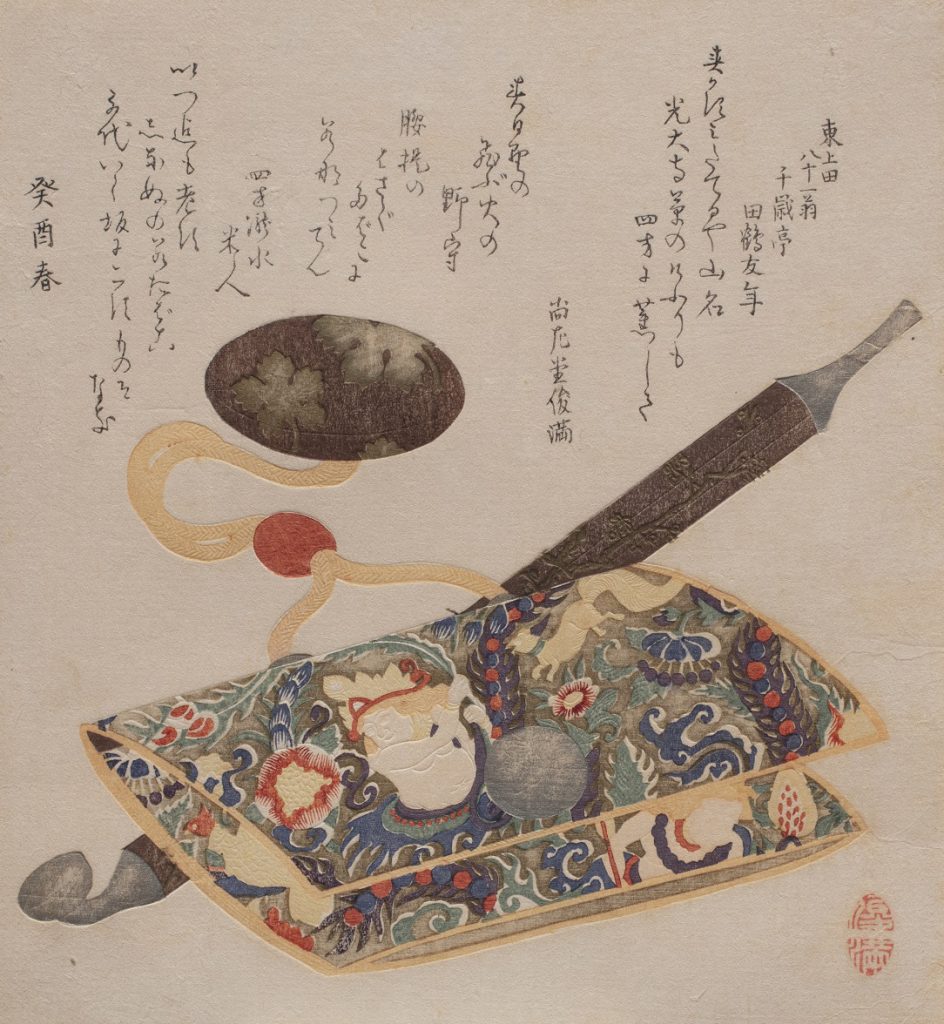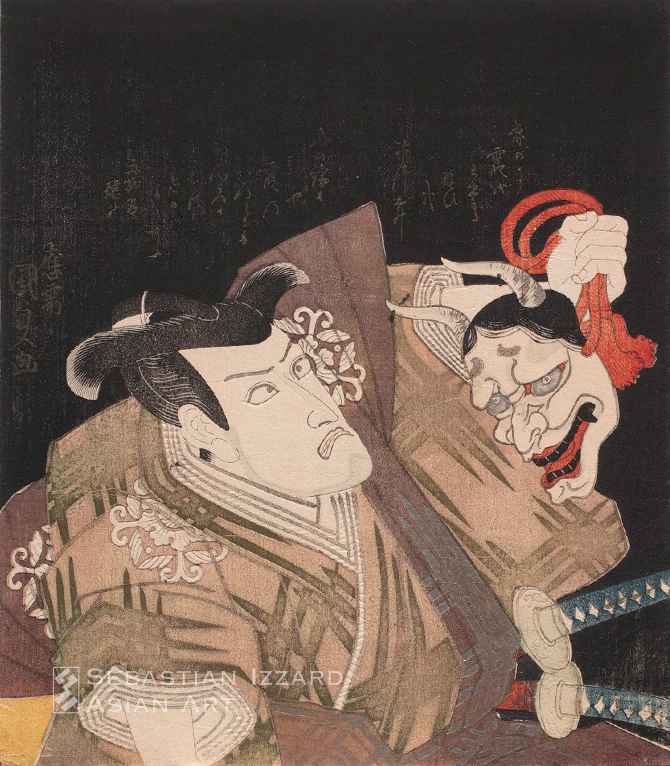
Kubo Shunman (1757‒1820), A Pipe and Decorative Tobacco Pouch with Ojime Bead and Manju Netsuke, 1813, color woodblock print with metallic pigments: shikishiban surimono
Privately Commissioned Japanese Prints and Albums from the Late 18th and Early 19th Centuries, Sebastian Izzard Asian Art LLC
March 18-26, 2022
The spring exhibition at Sebastian Izzard Asian Art LLC will feature surimono, the privately commissioned counterparts to the commercial Japanese woodblock prints of the late eighteenth and early nineteenth centuries. Produced in small numbers for a mostly educated audience of literati, surimono were often more experimental in subject matter and treatment, and extravagant in printing technique, than commercial prints. Two artistic groups dominated surimono production: the group of artists led by Katsushika Hokusai (1760‒1849) and his school, including Totoya Hokkei (1780‒1850) and Yashima Gakutei (1786‒1868), who specialized in still-life, landscape, and illustrations of classical Chinese and Japanese literature; and the artists led by Utagawa Toyokuni (1769‒1825)—and after his death in 1825 by Utagawa Kunisada (1786‒1865)—who became known for images of the theater and its performers. Fine examples by these artists as well as other renowned painters including Kitagawa Utamaro (1756‒1806) and Kubo Shunman (1757–1820) are featured.

Utagawa Kunisada (1786‒1865), Ichikawa Danjūrō VII as Endō Musha Morichika, color woodblock print with silver and bronze metallic pigments: shikishiban surimono
Unlike commercial publishing, cost was not a primary consideration in the production of surimono. Only the finest quality paper was employed. Skilled artisans cut highly refined and complex matrices of blocks which craftsmen worked with new and inventive procedures and materials. The shikishiban, or square paper shape, soon became the format of choice among the many ukiyo-e artists hired to design surimono.
Read more, click here
